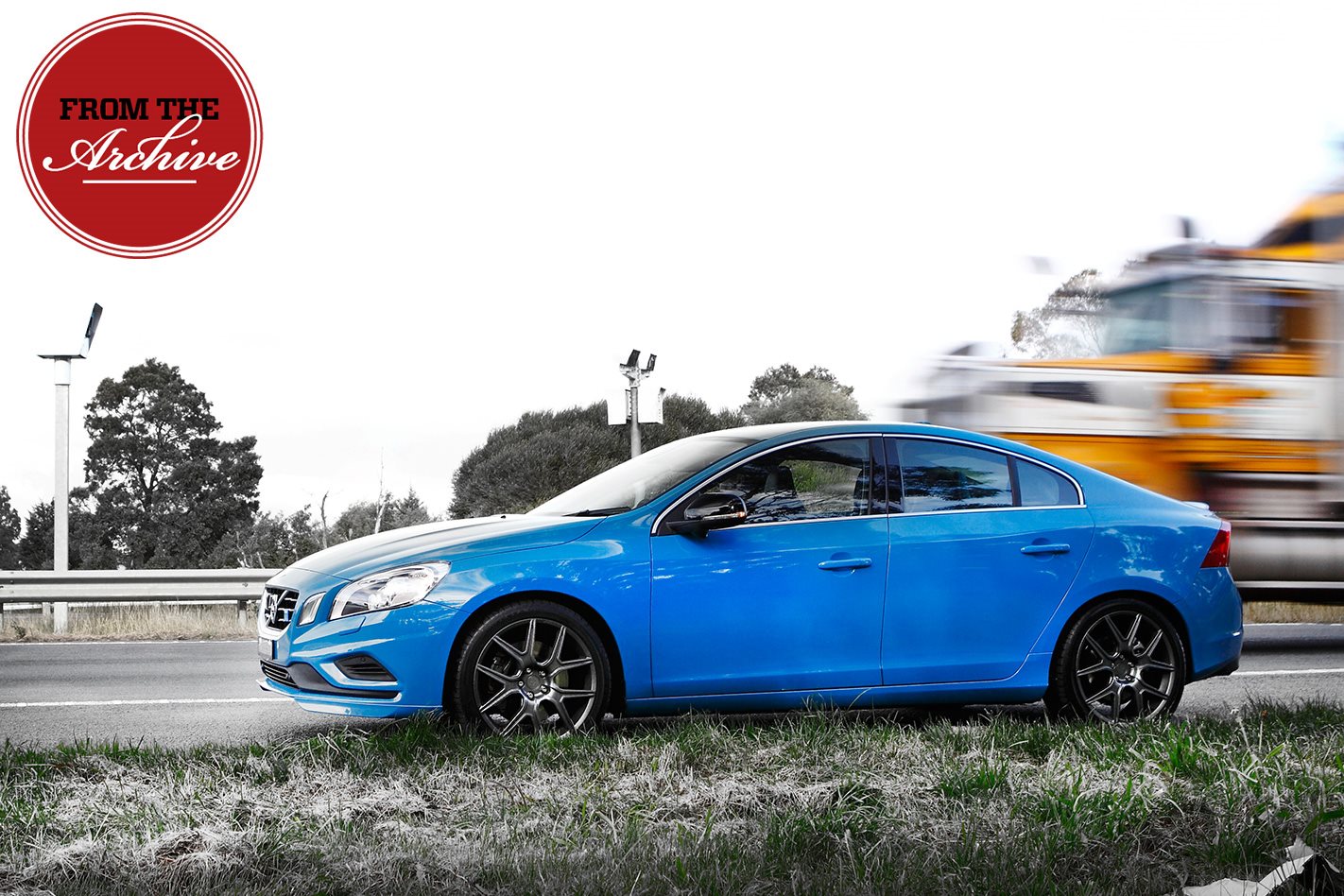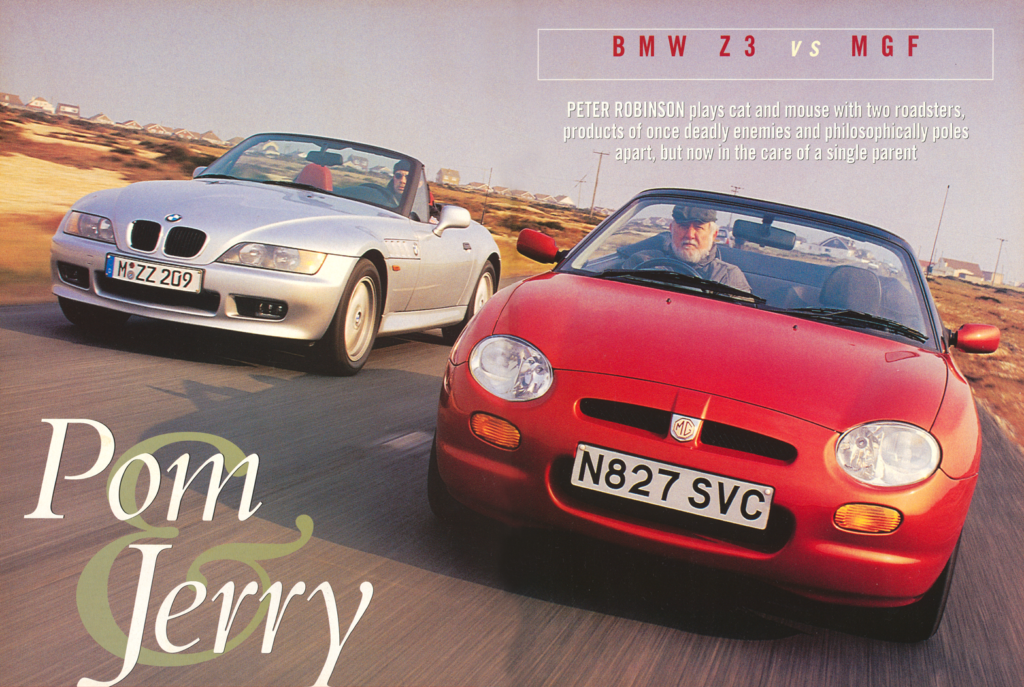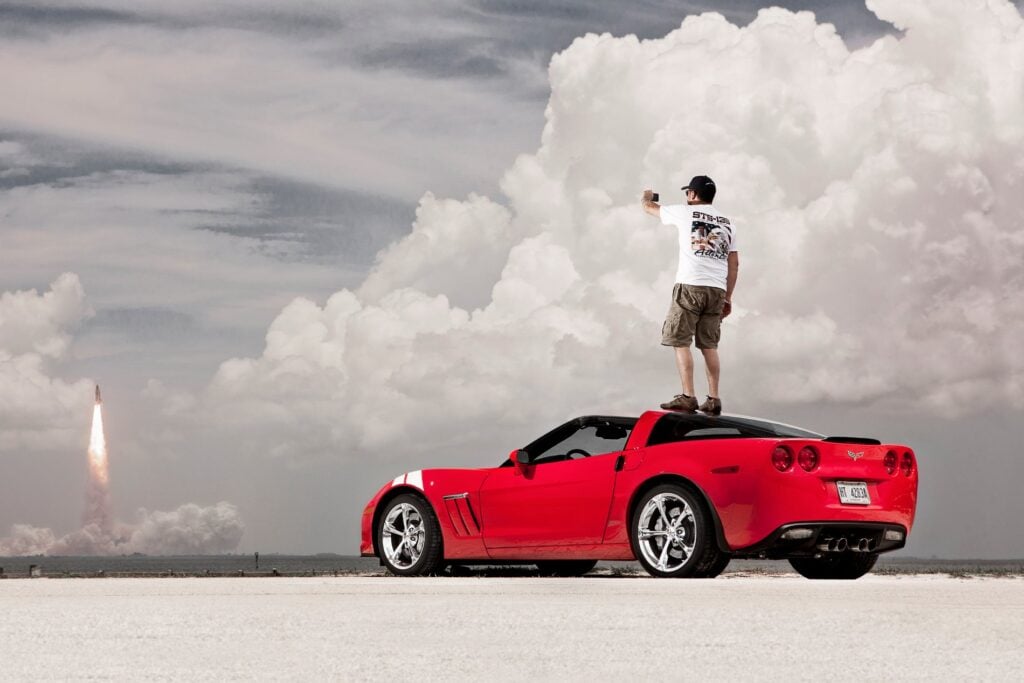This article was first published in the October 2013 issue of Wheels magazine.
I don’t feel much like Ned Kelly. Unlike almost every other criminal, I’m frankly a little bored as I commit my crime, and I end up praying I get caught by the police. I’ve never arrived in a city with the sole intention of breaking the law before, but any sense of roguish glamour soon fades as I head out of Melbourne on the Hume Highway, flagrantly breaching Australian law by doing something that is considered perfectly safe and legal in other countries.
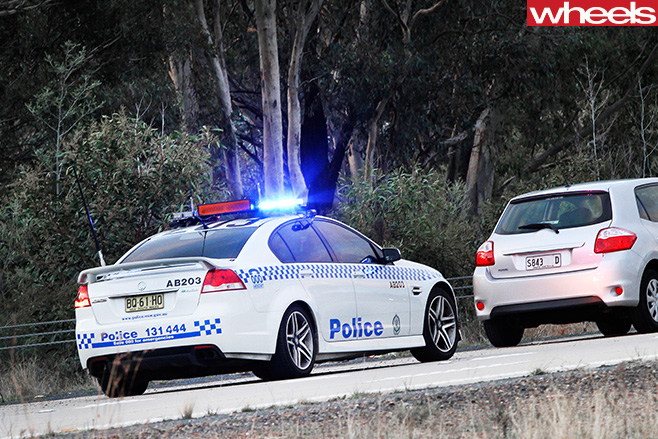
So plans are made. Given that I am deliberately breaking the law of your land I feel some mitigation is required. First, the car: a Volvo S60 Polestar. Its 257kW blown straight-six and trick Ohlins suspension aren’t relevant, sadly. More important is the fact that it’s a 250km/h performance car with tyres, brakes and dampers all in perfect condition and massively over-specified for the moderate-pace straight-line cruise we have planned.
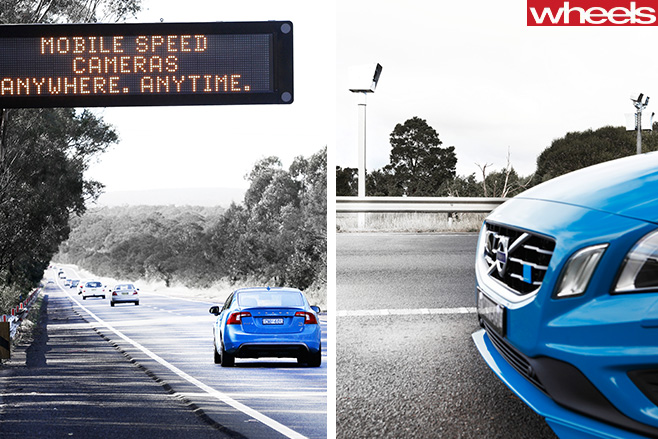
Having driven the diesel version of the S60 for a year in the UK, I’m very at home with this car and its systems. Long hauls like this are as familiar to Swedish drivers as they are to Australians and their cars reflect this, with great seats, calm steering, and good ride. This hi-po Polestar sacrifices some of the latter to handling, but it’s still a fine tool for this job.
I feel equally well-prepared. In Australia for over a week when I do this, I’m rested, jet-lag free and abstained from booze the night before. While 99 per cent of us consider ourselves above-average drivers, as evidence of my own fitness for purpose I can at least offer 15 incident-free years of road- and track-testing and attendance on every kind of advanced driving course I can blag my way onto, including a road-craft refresher with a former senior British police instructor just a couple of months before.
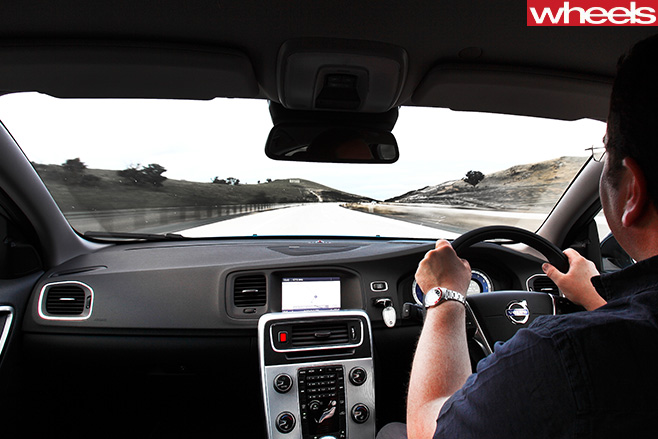
But where the limit is 110 I’ll run with the cruise set to an indicated 130. I have an accurate Garmin handheld GPS with me which tells me this is a true 127km/h. I could cruise at a true 130, but this way, as the speed flexes up a couple of kays downhill, I still won’t be breaking Wheels’ proposed new limit, and once I’m in New South Wales, editor Corby won’t be stung for the higher fines that arrive over 130. But I’m going to stick to the limit for the first 40km of 110-limit out of Melbourne, as I’m told there are fixed and average-speed cameras that are guaranteed to ping us, and I have no desire to needlessly enrich the State of Victoria at the expense of Wheels’ lunch budget. I can extrapolate our average speed back over this section. Our Cannonball Run-lite starts at Broadford.
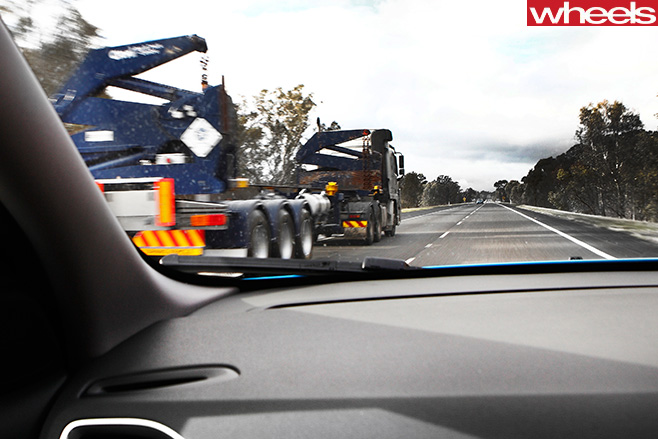
Once past the last bank of cameras at Broadford I note my kays, start the clock and enjoy a too-brief blast of the Polestar’s revised, gravelly exhaust note before I hit 130km/h. I’m aware that the cop in the Ford Falcon probably isn’t far behind us, but we just have to get on with it.
So how does it feel? First, I wouldn’t advocate making the Hume 130 all the way. There are sections where the surface or the angles of bends or crests aren’t up to the standards of, say, French autoroute, where the limit is also 130. There was nothing the Volvo couldn’t handle with 95 percent of its ability in reserve, but a newly qualified driver in a worn-out car in the dark and rain might get into trouble sooner at these speeds. A variable limit would seem right: less through certain sections, or in the rain, or for L- or P-plate drivers.
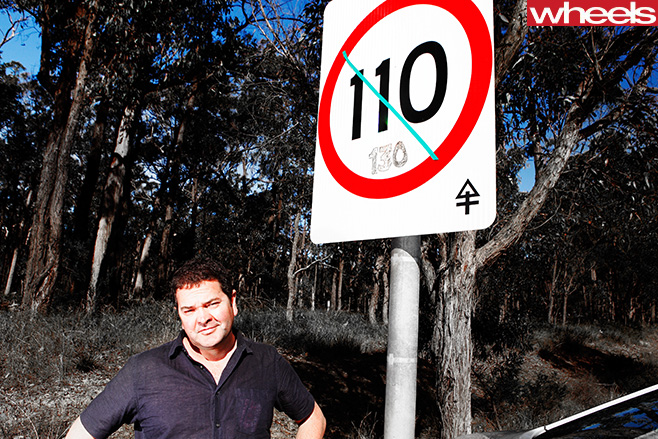
Fortunately, travelling on a Saturday in quiet traffic, we didn’t see enough of the super-slow overtakes to affect our progress and the veracity of our figures, and we very seldom dropped below 130km/h. After just a week driving in Australia and (mostly) obeying the limits, being able to do 130 free from the worry of fines felt like a blessed relief; after a lifetime of it, you’d probably feel like Morgan Freeman when the prison gate finally clanks open at the end of The Shawshank Redemption. And I wondered what the other drivers must have made of my bright-blue Volvo as we passed them at that speed. Were they jealous? Did they think I was insane, and on a mission to kamikaze my licence? That I was an undercover cop? Or that I’d fallen asleep with my foot on the gas? Frankly, that was the greatest danger. On those laser-straight, perfectly surfaced stretches of the Hume, even 130 felt safe enough to be dull.
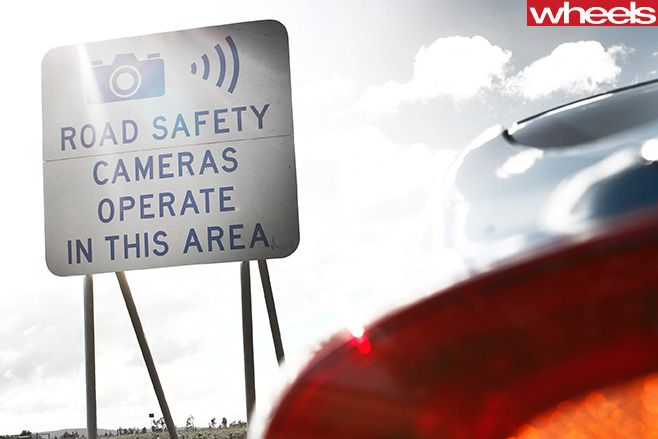
So we did what drivers might be more inclined to do if they had to spend less time actually driving: we took regular breaks. As a tourist, the landscape the Hume passes through might not be your most dramatic but the rolling hills and grazing cattle have a quiet pastoral beauty, particularly as the red sun sets behind the white-barked gum trees. So I stopped (and stopped the clock) to photograph that, and the old centre of Holbrook, which seems barely to have changed in a century, other than the weird addition of a submarine in the middle of a town a good 350km from the coast: concreted in, I noticed, lest it float away, or someone try to steal it.
An hour or so up the road we stopped again at the Dog on the Tucker Box ‘servo’, as I believe you call it, so I could sample some authentic Aussie road food. Seems you can have it in any colour you like, so long as it’s brown. There’s another highway-related problem your Government might want to take a look at.
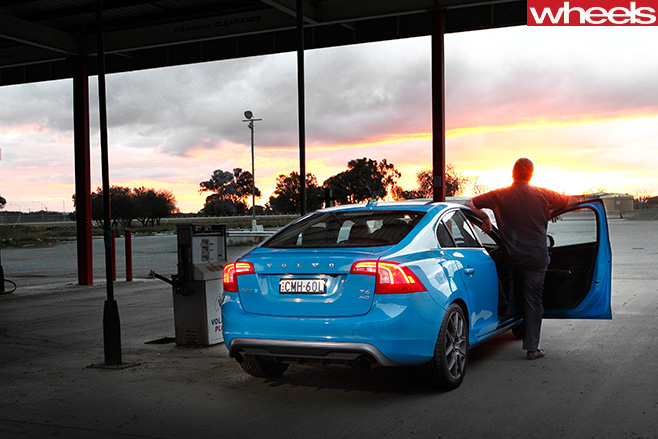
Our ‘control’ car, Wheels’ long-term test Holden Volt with its cruise set to a true 107km/h (an equal amount under the limit for the same reasons and for accurate comparison) managed a true average of 102.6km/h. It would take seven hours and 34 minutes to make the same trip: an hour and 11 minutes longer, with a driver who was stultified by the end of it. Yes, there are costs: emissions and fuel consumption are a little higher, and an accident at 130 is bigger than one at 110, but apply that limit and that time saving across every suitable Australian road and you might have a difficult decision to make. Or you might already have made it.
And knowing that he was never doing more than a true 110, and thus wasn’t reliant on Victoria’s absurd ‘tolerance’ of 2-3km/h, or less than half his Volt’s speedo error, our control driver didn’t have the constant thrill of imminent police action to keep him alert. I had all my paperwork ready in the door pocket and taken my press card out of my wallet in anticipation of getting pulled. But worry that we’d get done so often that we’d have to abandon turned first to confidence that we’d make it, and then, as we approached Sydney, desperation.
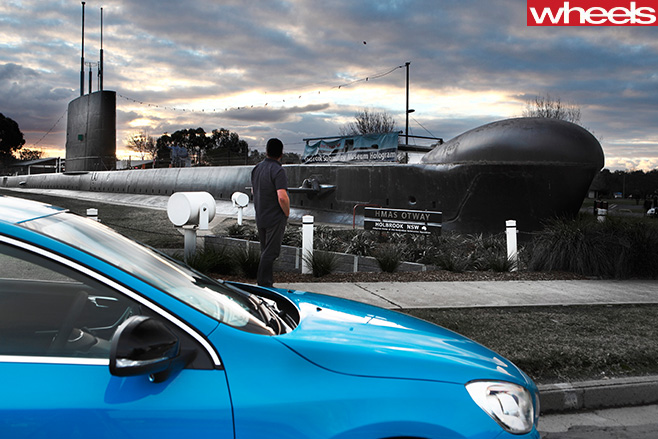
It never happened. I was gutted. You might wonder which is the bigger story: the fact that unlike what you all told me, it is possible to do 130 for hundreds
of non-Outback kays and not get tagged once (although our snapper did pass no less than five speed traps on his way back the next day), or the fact that you could give an hour back to everyone driving the Hume by raising the limit on the majority of it to something that still feels entirely sensible. I think the last point is more important. I was just lucky. Your speed limit is nuts.
Road Rules Britannia
Us Poms suffer a speed limit of 70mph on our motorways and dual carriageways. It’s only a couple of kays faster than your 110km/h (68mph) limit, but we’re just not that bothered about it because our cops take a semi-sensible approach to enforcement. Generally, fixed cameras won’t flash until you’re doing 10 per cent over the limit, plus 2 or 3mph, so 79mph in a 70 zone. And right up to 96mph (155km/h) you’d be unlucky to get more than a £60 ($100) fine and three demerit points: your licence is suspended at 12. So the default cruise speed on our motorways is around 80mph (130km/h), and we’re not afraid to use harmless bursts of acceleration to clear slower-moving vehicles, meaning better-spaced traffic. There isn’t much pressure to get the limit raised; the UK Government just dropped a plan to increase it to 80mph: nobody seemed to notice.
Local zeroes
Lots of Australian friends had told me how awful the driving is here. We Brits would never contend that we have the lock on awesome driving talent (that’s the Italians) but I was still shocked by some of what I saw in this first-world nation: a bit more cash for driver ed and a bit less on draconian speed-limit enforcement mightn’t be a bad idea. On the Hume run alone I saw a speeding P-plate driver tearing open a carton of juice with her teeth, a ute with a trailer weaving in the wind and inches off the bumper of the car in front, and drivers who came sailing past me into 80km/h roadwork sections at 110, possibly so switched-off after hours festering at that speed that they just hadn’t noticed.
Global warning
Raising the highway speed limit across Australia to the same 130km/h as they enjoy in NT is probably as much as you can hope for. There are very few places where the limit is higher. Germany is, of course, the only significant example: around half its 12,000km autobahn network is derestricted, and a few roads in India and the Isle of Man are now the only others with no limits. Poland recently increased its limit to 140km/h, but elsewhere in Europe 130km/h is the most you’re permitted, and many countries (including Spain, Sweden, Denmark and the UK) have the same 110km/h limit as Australia.

